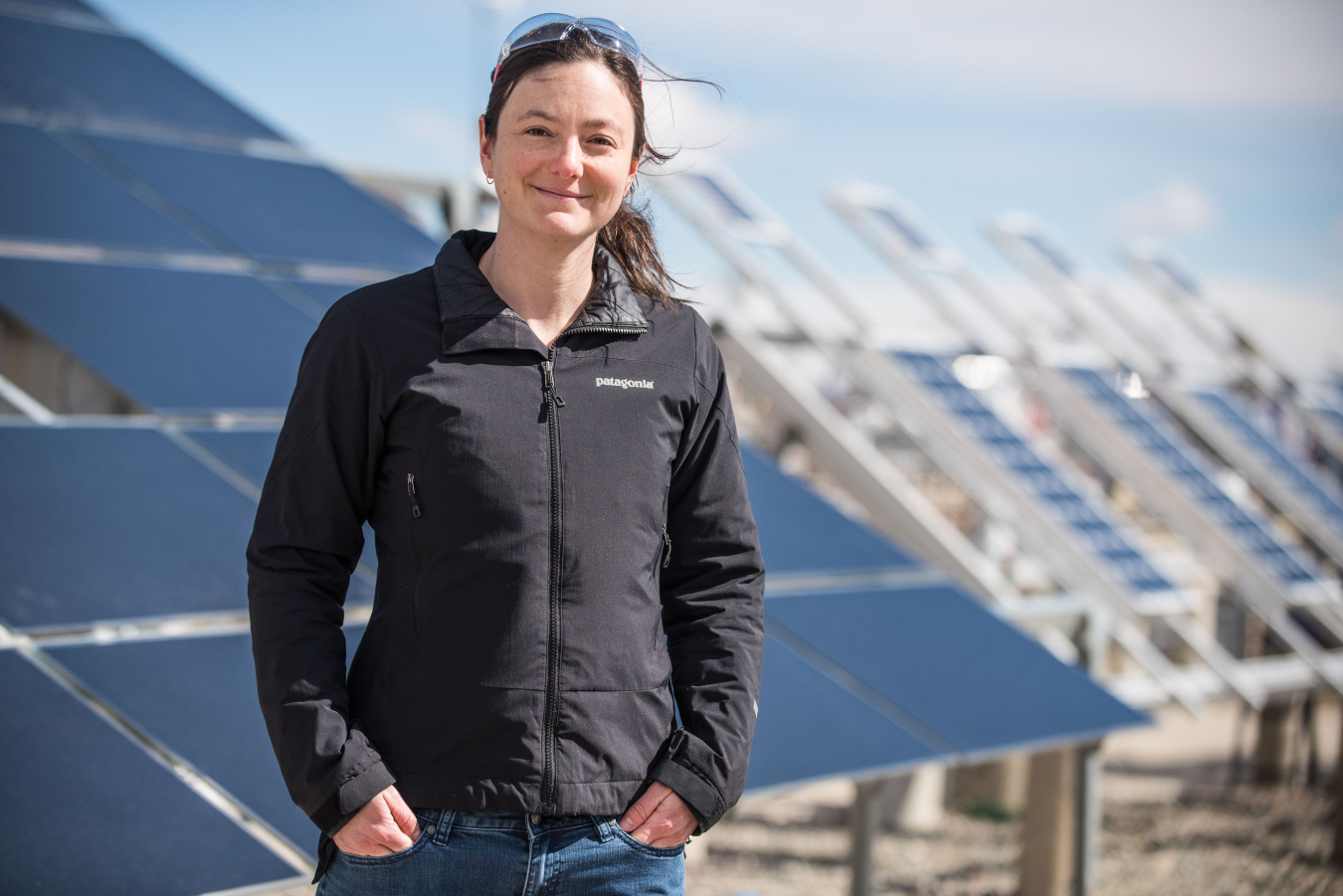Learn why Adele Tamboli loves her job as a scientist at the National Renewable Energy Lab with a joint appointment at the Colorado School of Mines.
May 20, 2019
Adele Tamboli is a scientist at the National Renewable Energy Lab with a joint appointment at the Colorado School of Mines. Her research focuses on materials science and photovoltaic devices, including silicon-based tandem solar cells, novel epitaxial and thin-film PV absorber materials, and development of new materials for a variety of energy-relevant applications. She also runs NREL's Hands-On Photovoltaic Experience (HOPE), a summer workshop for graduate students. Before joining NREL, Dr. Tamboli worked on Si and Si/III-V microwire array materials for photovoltaics and solar fuels, as well as III-nitride microcavity lasers and light-emitting diodes. She received her Ph.D. in Materials from the University of California, Santa Barbara, her B.S. in Physics from Harvey Mudd College, and did postdoctoral work at the California Institute of Technology.
What inspired you to work in STEM?
I'm not one of those people who has "always" known I wanted to be in STEM. However, at least since high school, I've known that I enjoy solving challenging problems. The collaborative aspects of science also work well for me; I enjoy being part of a community as well as being able to work independently when needed. Also, it doesn't hurt that the job market for STEM is typically a good one to be in, especially if you have an advanced degree.
What excites you about your work at the Energy Department?
As a renewable energy researcher, I believe that the technologies I work on have the potential to make the world a better place. Additionally, my job involves educating younger scientists, which I find very rewarding. I also like that there is a lot of variety as well as a lot of independence in my job. Within some constraints, I can choose to work on any topic I can find funding for, which gives me a lot of opportunities to be creative and take risks.
How can our country engage more women, girls, and other underrepresented groups in STEM?
As with most problems we face, we should be guided by peer-reviewed studies that expose the underlying reasons for gender (as well as race and economic) disparities. However, this knowledge isn't widely discussed or implemented within the scientific community. One concrete example would be using gender-blind methods during college admissions, hiring, and peer review of grants and publications, since we know that unconscious bias is a problem. We also know that harassment and discrimination are prevalent but under-reported in STEM fields, so institutions need to change, both to support victims and to eliminate the structural issues that enable these sorts of behaviors (e.g. the extremely hierarchical nature of organizations and the extreme power imbalance between principal investigators and their students/postdocs). We could do a lot more to inform people of the underlying causes of underrepresentation, as well as the benefits to productivity and creativity that have been shown to result from increased diversity to motivate organizations to fix these problems.
Do you have tips you'd recommend for someone looking to enter your field of work?
Seek out organizations and research areas that you find personally motivating, as well as a community that you can work well in. If that community doesn’t exist, build it. Science is highly collaborative, and great ideas and solutions to hard problems generally come from collaboration and good conversations, whether they happen in the lab or on a run with a friend, so it’s important to find (or hire) people you work well with. Learning to write well is also a very important aspect of good communication, since that is how you communicate your work to the vast majority of the field. The actual practice of science can be very different from what most people experience in high school and college classes. So, seek out research experiences early and see if it's right for you, and remember that there are a wide variety of career paths and types of fields within STEM, so don't get discouraged if your first impressions don't match what you're looking for.
When you have free time, what are your hobbies?
Like many Coloradans, I enjoy a wide variety of outdoor sports including rock climbing, trail running, and mountain biking.
Learn more about our programs & resources for women and girls in STEM at http://www.energy.gov/women

